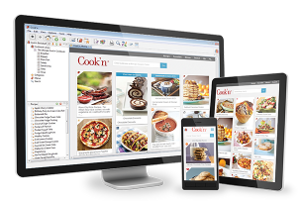
Most of the beans we know and love toady originated in the Americas and were eaten by the ancient South American cultures. In fact, archeologists date beans in these tribes back to 6000 B.C. These beans include the green, kidney, black, pinto, lima, navy, and wax. The Aztecs had to pay taxes to their central government in the yearly sum of 8000 bushels of beans. The same amount of maize and other grains also had to be paid by each Aztec province.
When Christopher Columbus met the American tribes, they introduced him to their beans. He took dried beans back to Europe where they were planted and grown first as ornamental plants and later for food. The Europeans liked these beans so much that they ate more of them than their traditional fava bean. The French experimented with the beans in their cookery. They started eating fresh, whole beans, cooked right in the pod, something Europeans had never tried before. They enjoyed the podded beans so much that they shared their idea with neighboring countries. England calls them French-beans, and here in the United States you'll often see labels like French-cut or French-style beans on ordinary cans of green beans. That's right-eating beans in the pod is no other than the still popular vegetable we know as green beans.
Beans are so good for you. Just one cup of cooked beans packs your body with complex carbohydrates (including fiber), with as much protein as 2 ounces of meat, with calcium, iron, potassium, and B vitamins, and with only a teeny-tiny trace of fat. On top of all that, beans taste great!
Despite their nutritional power and flavor, many people shun eating bean dishes today because they fear the gas that is often caused by them. Beans contain a certain complex carbohydrate that humans can't digest. When the carbohydrate reaches the large intestine, bacteria ferment the undigested sugars, releasing gas. Some people find that the more often they eat beans the less problem they have with gas. . . their body gets used to it. Others aren't bothered by it at all. Still others have a horrible time with beans and other gas-forming foods. If you fall in this last category, try a product called Beano® or other similar products. Beano® is a food enzyme that breaks down the carbohydrate culprit in your stomach, so that the bacteria in your colon won't be able to ferment it and cause gas.
Cook's Note: If you prefer, you can soak and cook dried beans to use in place of canned ones in any recipe. To cook dried beans, (1) rinse them to remove dust and mud. Sort through them with your fingers to remove little pebbles that may be left from harvest. (2) Presoak the beans to decrease cooking time, to retain vitamins and minerals, and to help break down the sugars in the beans that cause gas. Put the beans in a large pot. Cover them with water and soak overnight. OR, cover them with water and soak for 4 hours. Drain off the water, and then cover them again with more water. Simmer on the stove for 1-1/2 hours or until the beans are tender. OR, if you are in a real hurry, cover the beans with water, cover the pot, and then bring the water to a boil. Boil for 2 minutes, remove the pan from the heat, and let it stand for 1 hour. After soaking, your beans should be mostly tender and ready to be cooked according to the recipe. If your recipe calls for pre-cooked beans, boil your soaked beans in water until they are no longer crunchy. They should be easily mashed and very tender. When tender, add them to your recipe.
This Beans recipe is from the Food Facts and History Cookbook. Download this Cookbook today.